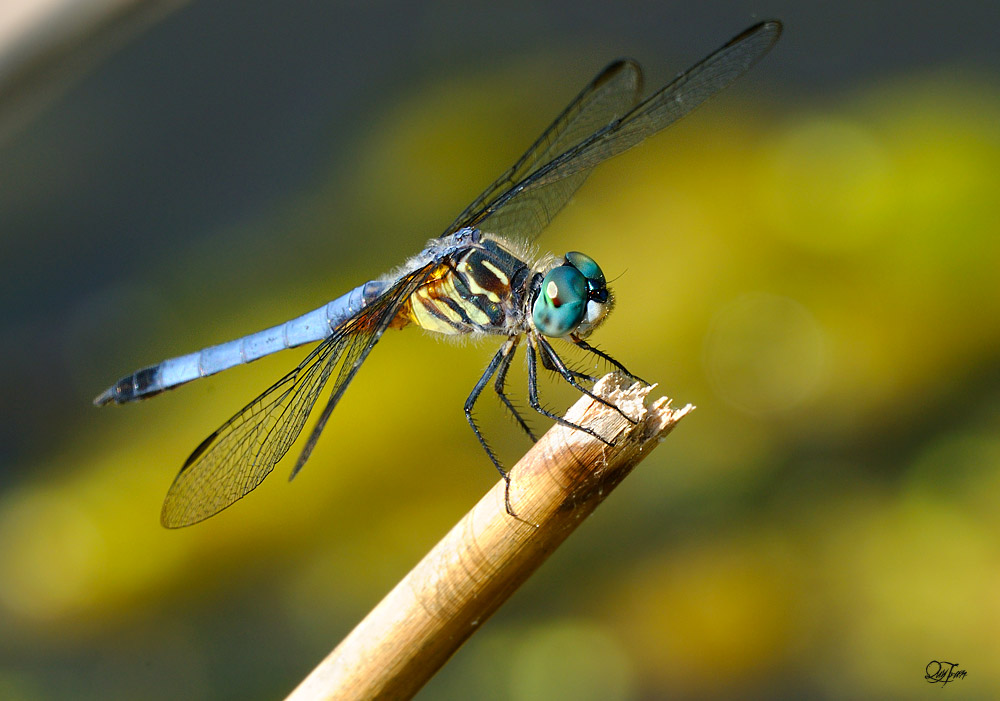






- Total
- General
- Arts
- Book
- Culture
- Economy
- Essay
- Fun/Joke
- History
- Hobbies
- Info
- Life
- Medical
- Movie
- Music
- Nature
- News
- Notice
- Opinion
- Philosophy
- Photo
- Poem
- Politics
- Science
- Sports
- Travel
Science Dragonflies, just amazing
2013.04.01 11:25
>
 Nature’s Drone, Pretty and Deadly By NATALIE ANGIER
Dragonflies are true visionaries. Their eyes are the largest and possibly the keenest in the insect world, a pair of giant spheres each built of some 30,000 pixel-like facets that together take up pretty much the entire head.
As they reported in Current Biology, Dr. Wiederman and his colleague David O’Carroll explored how dragonflies single out one target from a chaotic swarm. Working with the two-inch-long Emerald dragonfly often seen darting around Australian ponds, the researchers inserted an electrode about 1/1500th the width of a human hair into a dragonfly neuron known to be involved in visual processing. They then positioned the dragonfly in front of an L.C.D. screen and showed it first one and then two moving targets at a time.
|
Comment 0
| No. | Subject | Date | Author | Last Update | Views |
|---|---|---|---|---|---|
| Notice | How to write your comments onto a webpage [2] | 2016.07.06 | 운영자 | 2016.11.20 | 18131 |
| Notice | How to Upload Pictures in webpages | 2016.07.06 | 운영자 | 2018.10.19 | 32260 |
| Notice | How to use Rich Text Editor [3] | 2016.06.28 | 운영자 | 2018.10.19 | 5848 |
| Notice | How to Write a Webpage | 2016.06.28 | 운영자 | 2020.12.23 | 43786 |
| 8840 | 코너킥으로 웃었다... 황선홍호, 일본 제압하고 8강으로 [4] | 2024.04.22 | 황규정*65 | 2024.04.22 | 10 |
| 8839 | [시조]懷古歌: 회고가 [1] | 2024.04.21 | 정관호*63 | 2024.04.21 | 7 |
| 8838 | 부산형무소 살해사건 | 2024.04.20 | 온기철*71 | 2024.04.20 | 12 |
| 8837 | 육군 방첩대. 미군 CIC, 그리고 김창룡 | 2024.04.17 | 온기철*71 | 2024.04.19 | 18 |
| 8836 | 김구의 일생과 암살의 원인 | 2024.04.14 | 온기철*71 | 2024.04.14 | 17 |
| 8835 | OPERA MIGNON: Connais tu le pays [1] | 2024.04.12 | 정관호*63 | 2024.04.12 | 23 |
| 8834 | “쏘니,너와 함께 뛴건 행운!”, 400경기 감동 축하영상 [5] | 2024.04.06 | 황규정*65 | 2024.04.22 | 29 |
| 8833 | 길에서 만난 한식 [1] | 2024.04.03 | 정관호*63 | 2024.04.09 | 29 |
| 8832 |
돌아오는 기러기
[1] | 2024.03.27 | 정관호*63 | 2024.04.18 | 42 |
| 8831 | 이강인-손흥민 ‘골 합작’ 한국, 태국 3-0 완승…월드컵 최종 예선 진출 성큼 [2] | 2024.03.26 | 황규정*65 | 2024.03.27 | 41 |
| 8830 | 1945년 8월 15일 오후 강릉 홍제정 안마을에서 [2] | 2024.03.19 | 정관호*63 | 2024.03.24 | 73 |
| 8829 | 이승만은 왜 김구를 제거 했을까? [1] | 2024.03.17 | 온기철*71 | 2024.03.18 | 49 |
| 8828 | My Grandson [1] | 2024.03.15 | 노영일*68 | 2024.03.18 | 104 |
| 8827 | 蜀相(촉상): 촉한 승상 제갈량 [1] | 2024.03.15 | 정관호*63 | 2024.04.12 | 57 |
| 8826 | 1945년 8월15일에는 서울에 아무일도 없었다. [1] | 2024.03.13 | 온기철*71 | 2024.03.14 | 51 |
| 8825 | 왕소군 고향에서 [1] | 2024.03.08 | 정관호*63 | 2024.03.20 | 55 |
| 8824 | 정약용; 늙어가면 친구가 점점 없어진다. [5] | 2024.03.06 | 온기철*71 | 2024.03.08 | 84 |
| 8823 | Trump is OK to be a candidate. | 2024.03.04 | 온기철*71 | 2024.03.17 | 55 |
| 8822 | AMAZING GRACE [1] | 2024.03.01 | 정관호*63 | 2024.03.08 | 64 |
| 8821 | 한국에의 복수국적 - 이중국적이 더 불리한 경우를 알려 드립니다 [1] | 2024.02.24 | 운영자 | 2024.02.24 | 80 |
